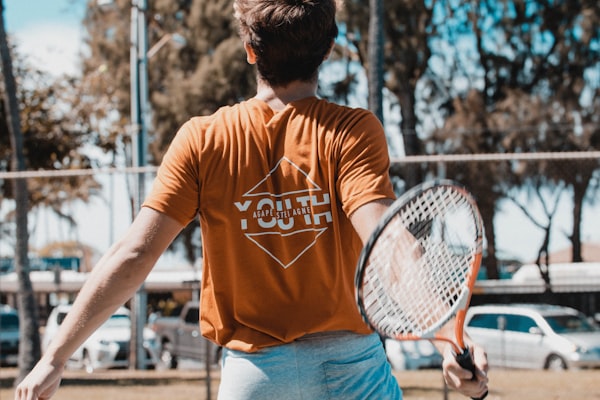
Repetitive Strain Injury - Massage Austin
What is a Repetitive Strain Injury?
Repetitive Strain Injury (RSI) is a broad term encompassing a variety of conditions caused by the overuse and repetitive movement of muscles, tendons, and nerves.
RSI can impact various body parts, the most common sites being the wrists, elbows, neck, shoulders, and lower back. These injuries often present as persistent pain, aching, stiffness, tingling, or numbness and are accompanied by tight muscles.
They can lead to specific problems and areas of tension that prolong recovery time and exacerbate problem areas. Such chronic conditions need careful management, especially when dealing with underlying health conditions.
RSI often develops over time, with symptoms gradually intensifying as the repetitive activity continues without proper rest or ergonomic adjustments. Early signs, such as mild discomfort or fatigue in the affected areas during or after the activity, might be subtle but can escalate to more severe pain and limited mobility.
Recognizing these early symptoms, changing work habits and posture, and using massage therapy to prevent the progression of RSI are key. This is particularly important in occupations or activities where repetitive motions are unavoidable, like office work, manual labor, or certain sports.
How do Repetitive Strain Injuries Occur?
Repetitive Strain Injuries (RSIs) occur due to prolonged, repetitive motion or overuse of particular body parts. They can occur in various settings, such as the workplace, during sports, or in everyday activities.
If the repetitive action continues without adequate rest or changes in technique, these symptoms can worsen. The body's natural repair processes can't keep up with the damage being caused, leading to more pronounced pain, stiffness, and sometimes swelling or numbness. This stage begins when individuals realize the severity of the condition.
Certain factors increase the risk of developing RSIs. These include poor posture or ergonomics, inadequate breaks during prolonged activities, and needing to use proper techniques or equipment.
For instance, an improperly arranged workstation can lead to awkward body positions, increasing the strain on specific muscles and joints. Similarly, not taking regular breaks during long periods of repetitive motion can exacerbate the strain.
At Iler Method®, we often observe that repetitive tasks such as prolonged typing or mouse use, extensive writing, or consistent repetition of the same physical movements in sports are typical examples of activities leading to RSI. These activities place ongoing stress on muscles, tendons, and nerves, causing strain and microscopic damage that accumulates gradually.
Where Repetitive Strain Injuries Commonly Occur
Injuries:
- Wrists and Hands
- Elbows
- Shoulders
- Neck
- Lower Back
- Knees
- Ankles
- Fingers and Thumbs
- Forearms
- Upper Back
Symptoms of Repetitive Strain Injuries
- Pain in the affected area
- Stiffness or tightness in muscles with joint movement
- Tingling or numbness, especially in the hands or fingers
- Swelling or inflammation of the affected area
- Reduced range of motion or flexibility in the area of pain
- Weakness in the affected muscles
- Throbbing or pulsating sensations in the affected limb
- Sensitivity to touch or temperature changes
- Muscle cramps or spasms
- Fatigue or discomfort after repetitive activity
Benefits of Trigger Point Massage for Repetitive Strain Injury
effectively alleviates
Trigger point therapy is a specialized form of massage therapy that is highly effective in treating Repetitive Strain Injuries (RSIs). It focuses on identifying and releasing trigger points, which are tense and painful muscle areas.
These points often develop due to overuse and repetitive motion, leading to localized pain and referred muscle pain in other body parts. By applying direct pressure and various techniques to these trigger points, the therapy helps break the cycle of spasms and pain. These techniques can bring immediate relief from chronic pain and RSI stiffness.
Trigger point therapy improves blood circulation to the affected areas. Enhanced circulation promotes quicker healing by bringing more oxygen and nutrients to the damaged tissues and facilitating the removal of waste products and toxins.
This improved blood flow reaches the deeper layers of muscles affected by repetitive stress injury, aiding in the repair of muscle fibers and tendons, thereby reducing inflammation and encouraging recovery.
For individuals with RSIs, this means more effective pain management, a faster return to normal function, and a reduced likelihood of injury recurrence, focusing on addressing the entire body's needs and tailoring the treatment to the client's specific needs.
In addition to physical benefits, trigger point therapy also contributes to overall stress and tension reduction, which is crucial for people suffering from RSIs. Chronic pain and limited mobility can lead to increased stress and anxiety, creating a vicious cycle where tension exacerbates the symptoms of the injury.
By alleviating pain and improving mobility, trigger point therapy can help break this cycle, promoting not just physical relief but also mental clarity.
What Makes Iler Method Techniques so Effective?
Iler Method®, trigger point therapy, performed with clients lying face down and without the need for oils or lotions due to the static nature of the techniques, enables therapists to exert optimal pressure, effectively targeting and alleviating deep tissue concerns for clients.
This precise and powerful technique ensures clients receive consistent, high-quality bodywork, effectively targeting their muscular issues. Unlike traditional massage methods, this approach minimizes unnecessary strain on the therapist, ensuring that each session delivers optimal benefits to the client.
Ring and Middle Finger Together -
Using the ring and middle fingers together for Repetitive Strain Injury (RSI) offers a structurally sound approach to separating muscles manually. With fingers curved and working in synergy, this technique distributes pressure evenly and effectively targets muscles.
Thumb Over Thumb -
The thumb-over-thumb technique provides a precise and powerful tool for targeting deep, multi-layered tissue in Repetitive Strain Injury (RSI) without straining the therapist's thumb. This method is particularly effective for accessing hard-to-reach muscles, offering significant downward pressure and relief for RSI-affected areas while safeguarding the therapist's hand from injury.
Ridge of the Forearm -
The ridge of the forearm technique utilizes the therapist's ulna bone to apply sustained pressure, effectively softening deeper, denser muscle tissues in Repetitive Strain Injury (RSI) cases. This method leverages the therapist's body weight and core strength, ensuring safe and efficient treatment while minimizing the risk of shoulder strain and enhancing the therapist's ability to exert more significant pressure on affected areas.
Knuckles -
Utilizing knuckles in massage therapy allows for applying focused pressure on broader muscle areas, effectively treating Repetitive Strain Injury (RSI) by reaching laterally positioned, dense muscle tissues. This technique, requiring considerable upper arm, shoulder, and chest strength, is particularly beneficial in static therapy sessions, where it helps alleviate deep-seated muscle tension and promote recovery in RSI-affected areas.
Final Thoughts: Repetitive Strain Injury Massage Austin
In this article, we delved into the nuances of Repetitive Strain Injuries (RSIs), providing insights into their causes, symptoms, and the areas most commonly affected.
This post serves as a guide for both individuals suffering from RSIs and massage therapists looking to enhance their practice.
I highlighted specific techniques such as Ring and Middle Finger Together, Thumb Over Thumb, Ridge of the Forearm, and Knuckles, illustrating how we employ these precise methods to address RSIs effectively.
At Iler Method, we emphasize the efficacy of our specialized trigger point therapy for treating these conditions, underscoring its ability to alleviate pain, boost circulation, and diminish stress.
Repetitive Strain Injury Massage Austin: FAQs
Does massage help with RSI?
Yes, massage, particularly trigger point therapy, effectively alleviates the symptoms of Repetitive Strain Injury (RSI).
Which type of massage is best for individuals with a repetitive use injury or who would like improved flexibility and performance?
Trigger point therapy performed by registered massage therapists is best for individuals with repetitive use injuries or those seeking improved flexibility and performance.
Is massage good for a strained muscle?
Yes, massage is an effective treatment for strained muscles. It helps increase blood flow, reduce muscle tension, and promote faster healing through improved circulation and relaxation.
Is regular massage good for repetitive strain injury?
Yes, regular massage is beneficial for repetitive strain injury, and though it's rare, some experienced therapists also provide a pain assessment to customize the treatment effectively.
Should you get a massage after back strain?
Yes, a massage following a back strain is advantageous, as it aids in pain relief, decreases inflammation, and accelerates recovery by promoting better blood circulation and easing muscle tension.
Is low back pain a sign of RSI?
Yes, low back pain is often a sign of RSI, but it's important to consult a doctor for an accurate diagnosis to understand the specific condition you're dealing with.
Disclaimer: Please note that at Iler Method® Therapy, we specialize in massage therapy and related techniques. All clients must understand that we are not medical professionals, and our services should not be seen as a substitute for medical advice, diagnosis, or treatment. Our practices are designed to support and complement your overall health, but they do not replace professional medical consultation when needed.




